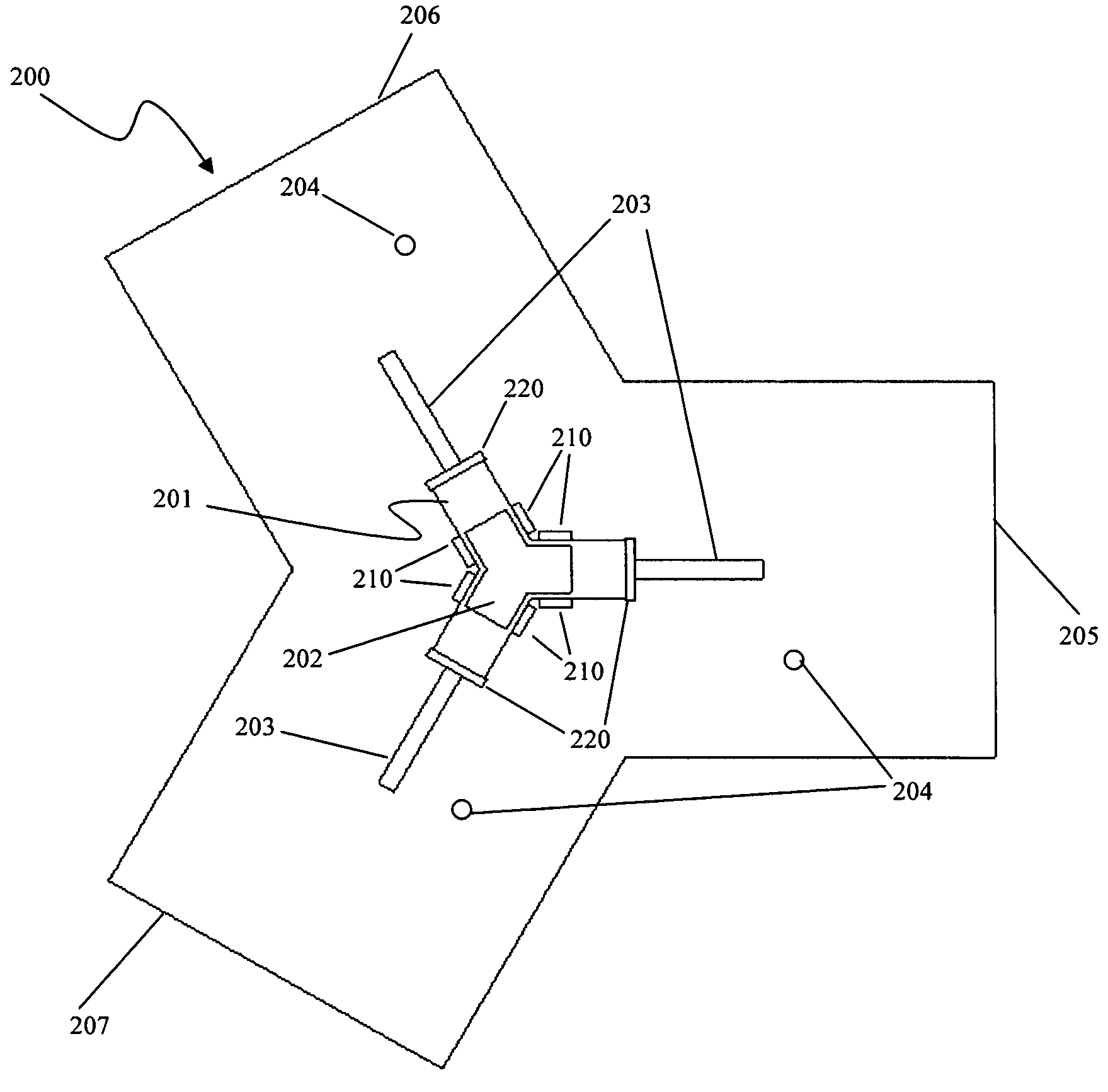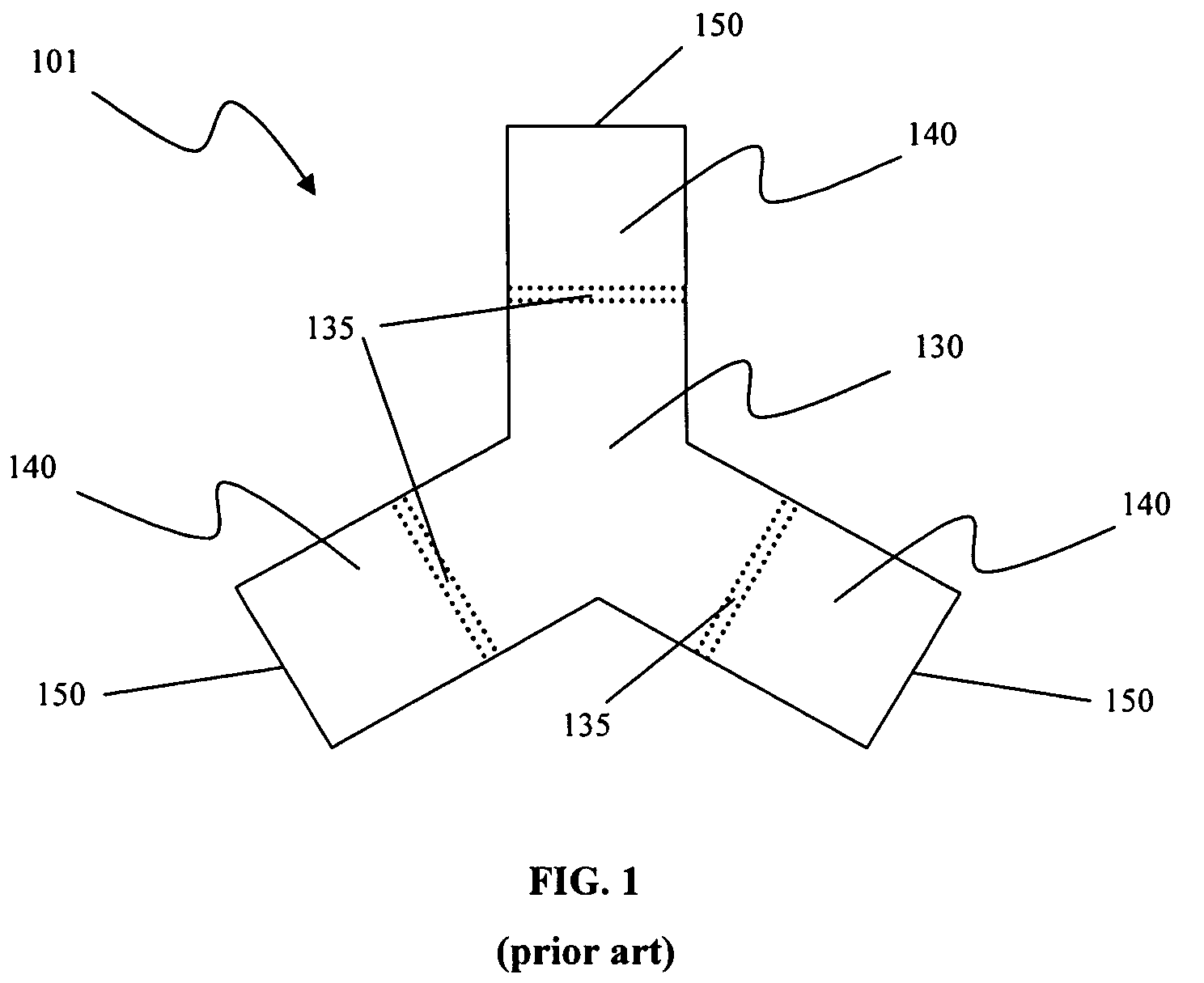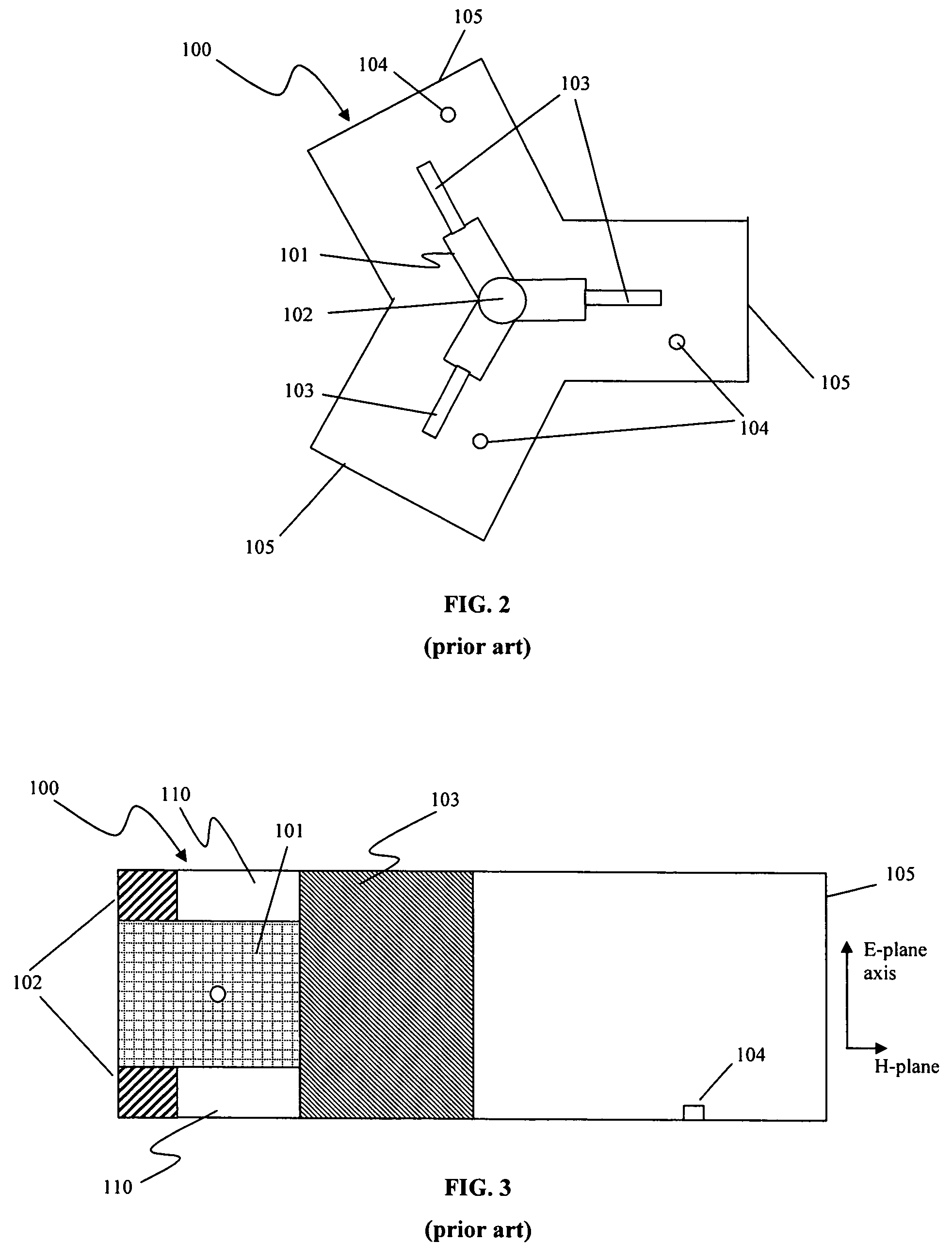Ferrite waveguide circulator with thermally-conductive dielectric attachments
a circulator and dielectric technology, applied in waveguide devices, basic electric elements, electrical apparatus, etc., can solve the problems of increasing the size and weight of the structure, reducing and limiting the application of ferrite structures to fixed-bias applications, so as to reduce the temperature rise of the ferrite and associated adhesive bonding. , the effect of improving the thermal conductivity of the path
- Summary
- Abstract
- Description
- Claims
- Application Information
AI Technical Summary
Benefits of technology
Problems solved by technology
Method used
Image
Examples
Embodiment Construction
[0035]Reference will now be made in detail to the preferred embodiments of the invention, examples of which are illustrated in the accompanying drawings.
[0036]The embodiments of the present invention increase the average power handling over conventional ferrite circulators by decreasing the temperature rise in the ferrite and associated adhesive bonds. Due to the electrical and magnetic losses inherent in ferrite materials, the ferrite elements in circulators absorb a portion (generally around 2%) of the microwave power that passes through the devices. As ferrite is a relatively poor thermal conductor, the absorbed power results in high internal temperatures in the ferrite and the adhesives used to attach the ferrite to the traditional quarter-wave dielectric transformers and dielectric spacers. The high temperatures in the ferrite result in a degradation in performance, as the material properties of the ferrite change with temperature. The high temperatures in the adhesives can cau...
PUM
| Property | Measurement | Unit |
|---|---|---|
| relative dielectric constants | aaaaa | aaaaa |
| length dimension | aaaaa | aaaaa |
| height dimension | aaaaa | aaaaa |
Abstract
Description
Claims
Application Information
 Login to View More
Login to View More - R&D
- Intellectual Property
- Life Sciences
- Materials
- Tech Scout
- Unparalleled Data Quality
- Higher Quality Content
- 60% Fewer Hallucinations
Browse by: Latest US Patents, China's latest patents, Technical Efficacy Thesaurus, Application Domain, Technology Topic, Popular Technical Reports.
© 2025 PatSnap. All rights reserved.Legal|Privacy policy|Modern Slavery Act Transparency Statement|Sitemap|About US| Contact US: help@patsnap.com



